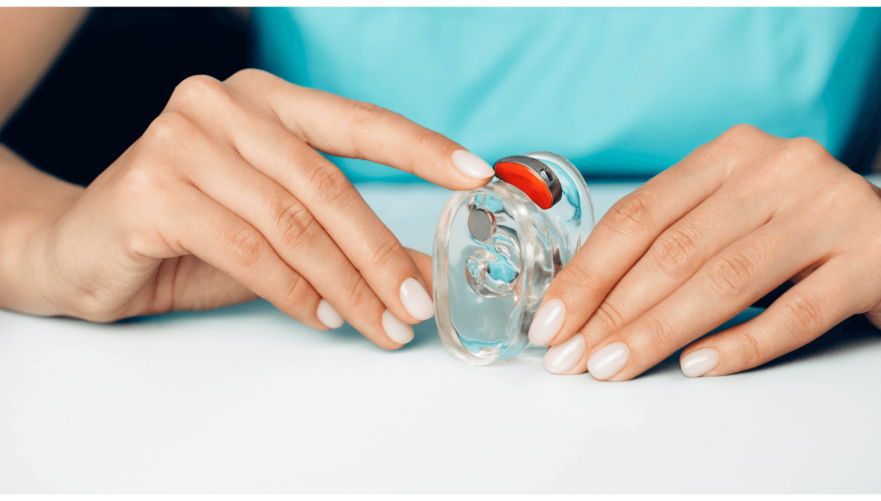Hearing aids are marvelous devices that have transformed the lives of millions by helping individuals with hearing loss regain their auditory capabilities. These miniature marvels of technology, however, are not immune to occasional issues that can affect their performance. In this article, we will explore common problems with hearing aids and how you can resolve them yourself, ensuring your hearing aids function optimally. Additionally, we’ll delve into the latest advancements in hearing loss prevention, diagnosis, and management, emphasizing the crucial role early detection plays in preserving your hearing.
Common Hearing Aid Problems and Solutions
Weak or Distorted Sound
Issue: If you’re experiencing weak, distorted, or inconsistent sound from your hearing aids, it can be quite frustrating.
Solution: First, check for earwax blockage, as it is a common culprit for this issue. Clean the hearing aid and your ears gently. Ensure the volume settings are adjusted correctly and that the hearing aid is appropriately fitted. If the problem persists, consult your audiologist.
Feedback or Whistling Noises
Issue: Hearing aid feedback, also known as the “whistling” sound, can disrupt your listening experience.
Solution: Ensure the hearing aids are correctly inserted, and that there is no debris or earwax on the microphone. A loose fit may also cause feedback. You can experiment with different ear tips or molds for a better seal.
Distorted Speech or Background Noise
Issue: If you’re struggling to hear conversations clearly or are overwhelmed by background noise, you may need adjustments.
Solution: Most modern hearing aids come with adjustable settings or programs for different listening environments. Consult your audiologist for fine-tuning your device to match your specific needs.
No Sound at All
Issue: Complete silence from your hearing aids can be distressing.
Solution: Ensure the hearing aids have fresh batteries and the battery contacts are clean. Check for blockages or obstructions in the receiver tube, and if necessary, replace the wax guard. If there is still no sound, contact your audiologist.
Discomfort or Irritation
Issue: Discomfort or irritation in the ear can arise due to improperly fitting hearing aids or allergies to materials used in the device.
Solution: Make sure the hearing aids are correctly fitted and clean. If the irritation persists, consider using hypoallergenic materials for custom earmolds or switching to a different style of hearing aid.
The Importance of Early Detection
While self-help techniques can address common hearing aid problems, it is equally essential to emphasize the importance of early detection and treatment for hearing loss itself. Recent research indicates that early intervention is critical in preserving your hearing.
Prevention
The latest advancements in hearing loss prevention include educating the public on safe listening practices and reducing exposure to excessive noise levels. The use of hearing protection devices, like earplugs and earmuffs, is recommended in loud environments.
Diagnosis
Advances in diagnostic tools and techniques have made it easier to identify hearing loss at an early stage. Regular hearing screenings are crucial, especially for individuals with a family history of hearing problems or those exposed to high noise levels in their work or recreational activities.
Management
Hearing aid technology has progressed significantly. Today’s hearing aids are smaller, more discreet, and offer a more natural listening experience. Features like Bluetooth connectivity and smartphone apps make managing your hearing aids easier than ever.
Cochlear Implants and Future Interventions
For individuals with severe to profound hearing loss, cochlear implants are a remarkable innovation. They can restore hearing by bypassing damaged portions of the ear and stimulating the auditory nerve directly. Future interventions may include gene therapy and regenerative medicine to address hearing loss at a cellular level.
The Role of Audiologists
While addressing common hearing aid issues can often be done independently, it’s essential to remember that hearing professionals, such as audiologists, are your primary partners in hearing healthcare. Regular check-ups with your audiologist are crucial to monitor your hearing and ensure your devices are optimized for your specific needs.
Audiologists are trained to diagnose and treat various hearing disorders, from common age-related hearing loss to more complex conditions. They can guide you through the process of selecting the most suitable hearing aids, customizing them to your preferences, and providing ongoing support and adjustments.
Conclusion
Hearing aids are powerful tools that can significantly improve the quality of life for those with hearing loss. By understanding how to address common issues with hearing aids and recognizing the importance of early detection and intervention, individuals can navigate the journey towards better hearing more effectively. Whether you’re experiencing issues with your hearing aids or simply wish to learn more about hearing health, don’t hesitate to consult a professional audiologist. They are your partners in ensuring that you continue to enjoy the sounds of life.

